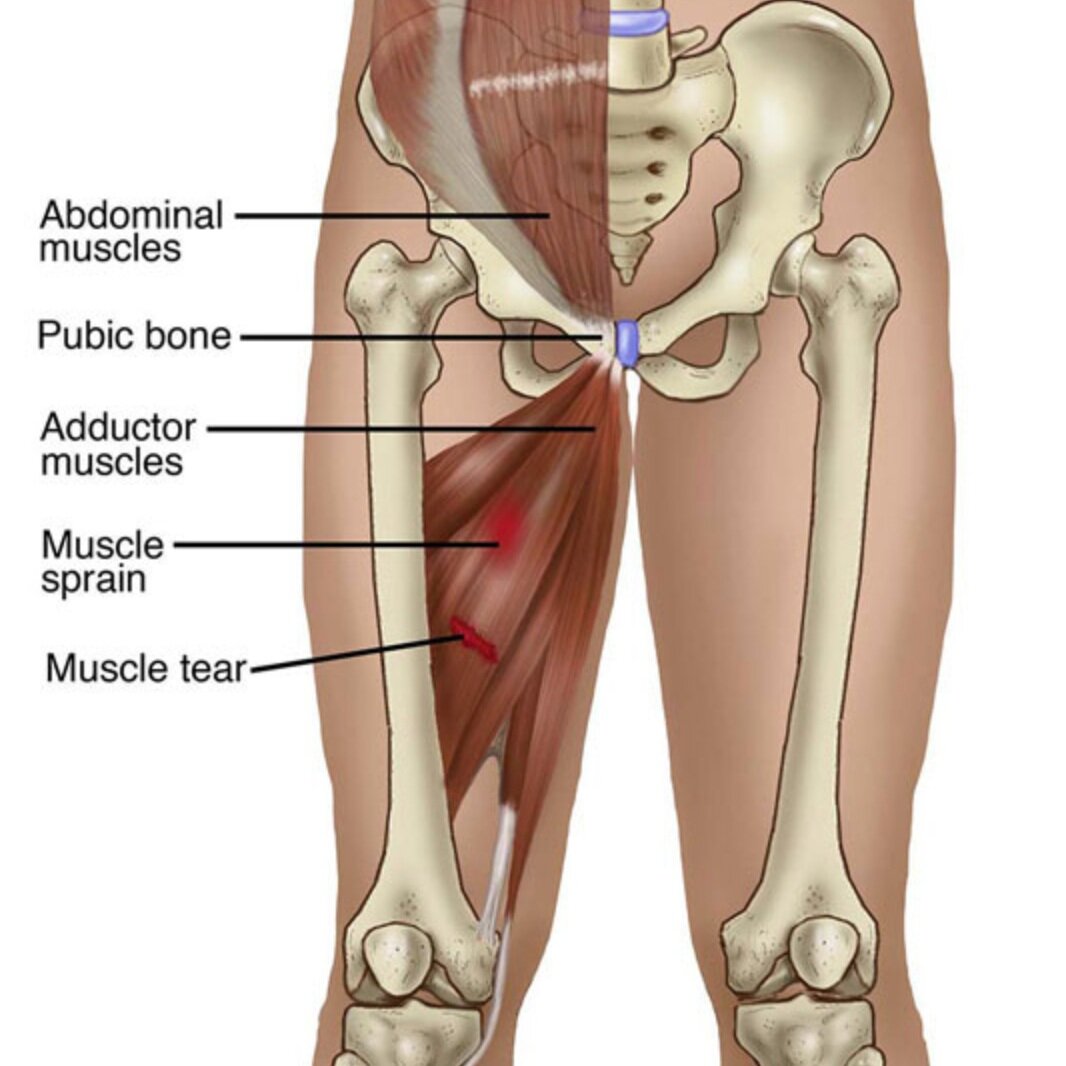Physical Therapy for Groin Injuries
Groin pain is often related to a strain or tear of the groin muscles, a complex of muscles that support movement of the hip joint. Groin injury is common in athletes, resulting from quick starts and stops, sudden trauma on the field, and repetitive overuse. Physical therapy can provide effective treatment for groin injuries, reducing pain and gradually improving muscle strength, mobility, and agility through a customized rehabilitation program.
Common Groin Injuries
The groin is located where the abdomen meets the top of the thigh and the inner thigh muscles meet the pubic bone of the hip. The groin muscles support hip joint movement. Known as adductor muscles, this group of muscles is located on the inner side of the thigh, beginning in the groin area and running down the inner thigh, where they attach at the inner side of the knee.
Groin pain is often related to a strain or tear of the groin muscles and is common in athletes. A groin injury can result when athletes engage in forceful movements (kicking, running, jumping), overuse of the muscles, or from a sudden trauma on the athletic field. Groin injury is common in sports that require bursts of speed, such as track, basketball, soccer, football, and rugby.
A groin strain is a partial or complete tear of the small fibers of the adductor muscles, occurring when these muscles are overstretched due to extreme force. According to the Orthopedic Journal of Sports Medicine, among all sports, a groin tear is the most common injury reported, comprising 24.5% of all hip injuries.
Symptoms of a groin strain include:
Sharp pain and muscle spasms in the groin area or lower abdominal region
Pain and tenderness on the inside of the thigh
Pain when raising knee or bringing legs together
Stiffness in the groin area
Bruising in the groin area if blood vessels are broken
Symptoms of a groin tear include:
A “popping” in the groin at time of injury
Sharp, sudden pain
Swelling and bruising
Tightness and leg weakness
Limping when walking
Pain in the hip, pelvis, and low back
There are three grades of a groin strain based on the amount of muscle damage incurred:
Grade 1: a mild or partial stretch of the groin muscles or a tear of few muscle fibers. The muscles may be tender and painful when contracted or stretched, but the individual can maintain normal strength in the muscle and walk normally. A grade 1 strain usually has a four-to-six-week recovery time.
Grade 2: a moderate stretch of the groin muscles with a greater percentage of muscle fibers torn. Injured individual experiences increased tenderness and pain, bruising, and a noticeable loss of strength. Injured may exhibit limping and have impaired use of the leg. A grade 2 strain has a two-to-three-month recovery period.
Grade 3: severe tear of the muscle fibers of the groin muscles or can be a complete muscle tear. Individuals may experience a popping sound at the time of injury, very apparent bruising, and very limited use of the leg. A grade 3 strain can lead to a four-month or more recovery period.
Physical Therapy Treatment for Groin Injuries
Physical therapy can provide effective treatment for groin injuries, reducing pain and improving muscle strength, mobility, and agility through a customized rehabilitation program. The physical therapist performs an objective movement exam to test strength and range of motion of the groin muscles as well as a palpation exam to assess the severity and location of the potential tear and inflammation.
Physical therapy treatment for a groin strain or tear typically includes:
Pain management during acute pain period using ice, heat, ultrasound, taping, and manual therapy
Gentle and active stretching exercises to improve mobility and range of motion in the leg and hip
Strengthening exercises as the patient progresses through recovery to address muscle imbalances and muscle deconditioning during the rehabilitation period, using weight-lifting and aerobic conditioning
Functional training and sport-specific agility and balance training to prepare for return to sport
To prevent groin injuries, it’s important to increase the intensity of activity gradually, not pushing yourself too hard too fast, and always warming up before an activity. Following a consistent strength and flexibility program with a focus on strengthening the muscles of the inner thigh and groin can help to prevent injury or re-injury of the groin muscles.
Groin injury is painful and limits your daily activities and participation in sports. Don’t let a groin injury become chronic. Work with our physical therapists to address groin pain early and improve your strength and mobility to return to sport quickly and safely.

